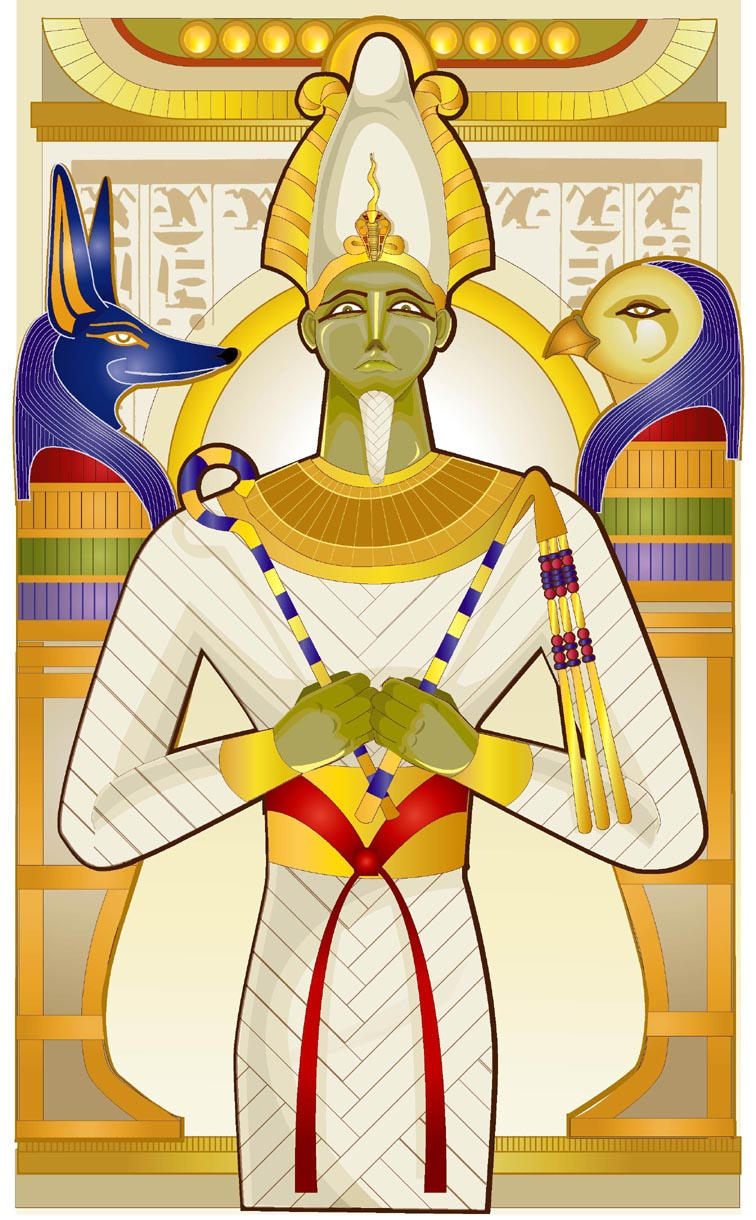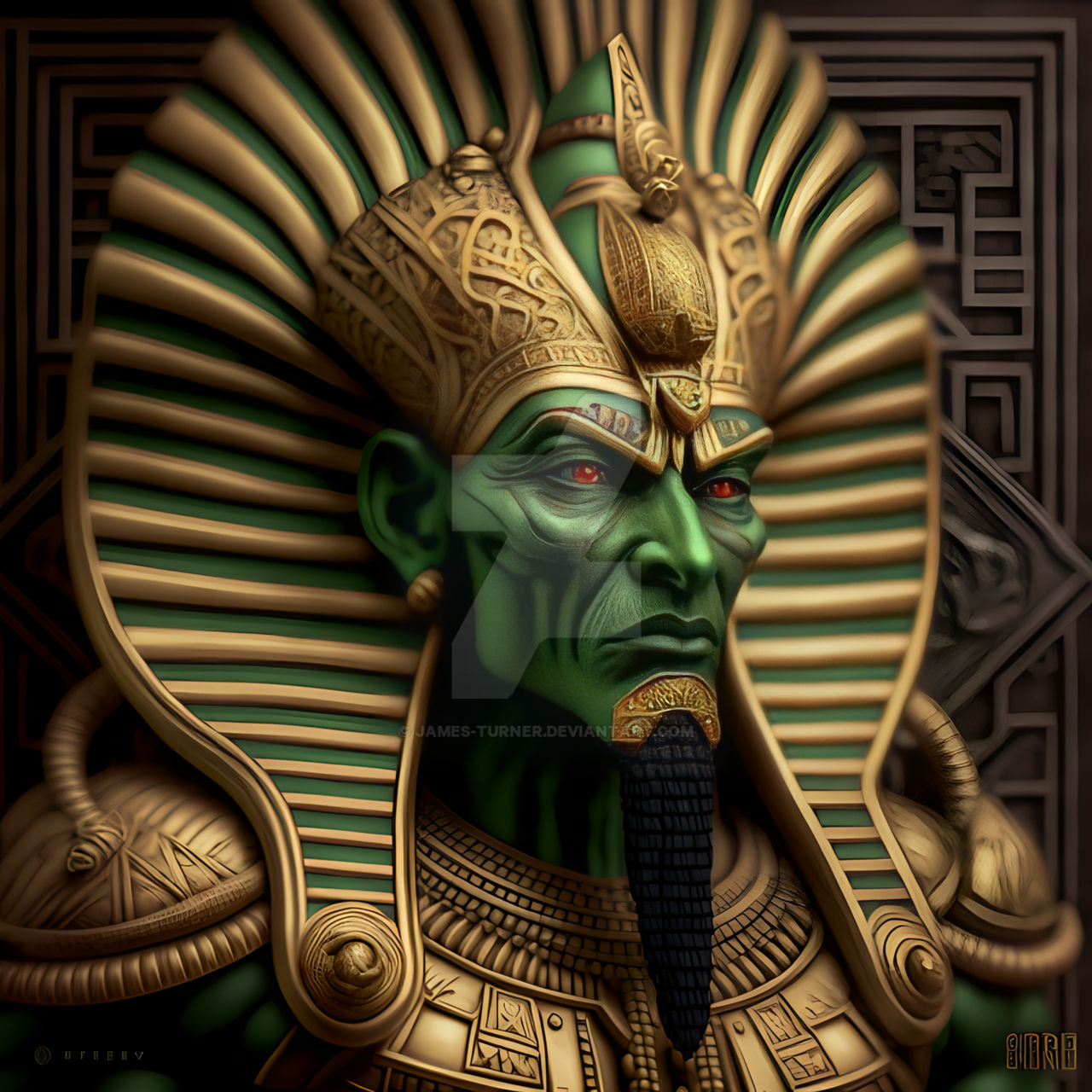Osiris St. Brown Age - Unraveling Ancient Tales
Have you ever wondered about the origins of names, especially ones that sound like they carry a whisper of old stories? Sometimes, when folks look up someone like Osiris St. Brown, they might just stumble upon something much older, a truly incredible figure from a time long past. It's almost as if the very sound of the name leads you back through history, to a figure who was, in a way, a very big deal in an ancient world.
That's right, we're talking about the mythical Osiris, a figure whose story, you know, has captivated minds for thousands of years. While the name might make you think of contemporary figures, the original Osiris is a character steeped in legend, a powerful god whose tales are, in some respects, quite fascinating. We won't be talking about a person's age here, but rather exploring the enduring legacy of a name that has echoed through the ages.
This ancient figure, a true cornerstone of Egyptian belief, lived a life—or perhaps, a mythical existence—that was full of twists and turns. From holding sway over the lands to becoming a master of the realm below the earth, his story is, basically, one of transformation and enduring influence. So, let's just take a little look at the life and times of this truly remarkable ancient being.
- Woman Trapped In Quicksand
- Million Dollar Listing Los Angeles Fires
- Acm 2024 Red Carpet
- Zodiac Aug 26
- Tracy Letts Playwright
Table of Contents
- Unraveling the Myth: Who Was Osiris?
- The Early Days and a Great Reign
- What Happened to Osiris's Body? A Tale of Destruction and Rebirth
- The Role of Anubis and the Changing Cosmos
- Who Were the Key Players in Osiris's Story?
- Geb, the Earth God, and His Power
- Thoth, the Wise Vizier, and His Cleverness
- How Did the Ennead Shape Osiris's Destiny?
Unraveling the Myth: Who Was Osiris?
When we hear a name like Osiris, it naturally brings to mind questions about its background and, perhaps, the age of anyone bearing it. Yet, the original Osiris isn't a person with a simple birthdate. This ancient figure, a powerful deity from Egyptian lore, held dominion over the earth before taking on the mantle of the underworld's master. He was, in fact, always regarded as a divine presence throughout every phase of his storied existence, which is, you know, quite a unique situation for a ruler.
His story, for one, didn't begin with a typical human birth. This figure of legend, in some versions of the myth about his passing, had Horus the Elder lending a helping hand to Isis and Nephthys. This collaboration was, in a way, a critical moment in the unfolding drama. His very tallness, measured at what would be about fifteen feet and three inches, or roughly four point seven meters, speaks to his larger-than-life status. This kind of physical description, honestly, really sets him apart from mortal beings, making him seem almost unbelievably grand.
This tale of Osiris, you see, stands out as the most important surviving narrative from ancient Egypt. It's a story that brought together nearly every significant divine being, both male and female, making it truly special in its scope. The way it managed to weave together so many powerful figures is, quite literally, what makes it so enduring. His earthly period of rule, a time of great importance, is something we can explore further if we look into the accounts of his deeds as a sovereign.
- One Tree Hill Event Wilmington Nc
- Skarsg氓rd Family Tree
- Olivia Hussey Christopher Jones
- 1972 Rolling Stones Tour
- Human Touch Rick Springfield
The Early Days and a Great Reign
Before his transformation into the underworld's sovereign, Osiris, as we've heard, held the reins of power over the land of the living. This period of his reign was, in fact, a time of considerable influence and, you know, significant happenings. He was, basically, the king, guiding his people and shaping their world. This early phase of his existence is often described as a golden era, a time when things were, apparently, rather good for the inhabitants of his domain.
During this period, his wisdom and guidance were, reportedly, quite remarkable. He was the one who brought order and civilization to the land, teaching people how to cultivate the earth and live in harmony. This aspect of his story is, truly, a testament to his benevolent nature as a ruler. It was a time when the very fabric of society was being woven, with Osiris at the center of it all, a guiding hand in the development of human ways. So, his initial role was, in short, one of a great benefactor.
His presence on earth, you know, was seen as a blessing. The accounts suggest that his rule was marked by peace and prosperity, a time when the land flourished under his watchful eye. This early part of his narrative, before the great troubles began, paints a picture of a revered and beloved leader. It's a key part of understanding the reverence people held for him, even after his fate changed. This initial period of his sway is, arguably, what made his subsequent story so impactful.
What Happened to Osiris's Body? A Tale of Destruction and Rebirth
The story of Osiris's physical form after his passing is, in a way, one of the most striking and, you know, rather central parts of his entire myth. Following his demise, his earthly vessel was, ultimately, taken apart. There's some discussion, as a matter of fact, about whether it was actually cut into many small bits, as some ancient writers, like Plutarch and others from Greece, tell us. This detail, of course, adds a rather grim element to the story, making it, honestly, quite a shocking turn of events.
This act of destruction, you see, was a pivotal moment, leading to the profound efforts of those who loved him to put him back together. The very idea of a body being so thoroughly dismantled speaks to the severity of the act that brought about his end. It's a narrative element that, in some respects, highlights the immense power of the forces arrayed against him. So, the fate of his physical remains is, basically, a core part of the drama that unfolds in the myth.
Despite the complete destruction of his form, Osiris was, nevertheless, still regarded as a divine being at every stage of his mythical journey. This persistence of his godhood, even after such a catastrophic event, is what truly sets his story apart. It underscores the idea that his essence, his divine spirit, was something that could not be truly extinguished, no matter what happened to his physical shell. This enduring divinity, you know, is a powerful concept within the ancient beliefs surrounding him.
The Role of Anubis and the Changing Cosmos
The figure of Anubis plays a truly significant part in the story of Osiris, particularly concerning the process of preserving his body. Anubis was, as a matter of fact, deeply involved in the mummification of Osiris, a ritual of immense importance. This act of care for the deceased god's remains is, arguably, one of the most memorable aspects of Anubis's role in the myth. It shows his connection to the very rituals of passing and preparation for the afterlife, which is, you know, rather central to the ancient beliefs.
However, after Osiris rose to a position of great importance, Anubis's place in the overall scheme of Egyptian divine beings was, quite literally, re-written to fit the new arrangement. This shift meant that Anubis, who had been a significant figure in his own right, found his story adjusted to align with the new order of things. He subsequently became, in the updated narratives, the child of Nephthys, which is, in some respects, a fascinating change in his family tree.
This adjustment in Anubis's lineage and standing shows how the stories of the gods could, apparently, change over time, adapting to new understandings and hierarchies within the divine world. It's a reflection of how ancient mythologies were not static but, rather, fluid and capable of evolving. So, Anubis's story, in a way, provides a glimpse into the dynamic nature of these old tales, showing how even the most important figures could see their roles re-imagined.
Who Were the Key Players in Osiris's Story?
The tale of Osiris, you know, is not a solo act; it involves a whole cast of compelling figures, each playing a very important part in the unfolding drama. These individuals, both divine and otherwise, shaped the events that led to Osiris's transformation from an earthly ruler to the master of the underworld. Understanding who these key players were is, basically, essential to grasping the full scope of Osiris's enduring narrative. It's like a grand play, with each character having a very specific and impactful role to fulfill.
From his loyal family members who sought to restore him, to the powerful beings who opposed him, the story is rich with interactions and relationships. This network of connections is, truly, what gives the myth its depth and emotional weight. It's not just about one god, but about the intricate web of divine beings whose destinies were, in a way, intertwined with his. So, knowing about these supporting figures is, actually, rather important
- Olivia Hussey Christopher Jones
- May 1 Astrology
- 1000 Lb Sisters Sodie
- Manya Seinfeld
- Joan Bachelorette Plastic Surgery Before And After

ArtStation - Osiris

Osiris ~ Myth Dunia

Osiris by James-Turner on DeviantArt